When designing Shanghai’s subway system, Chinese engineers were sent to study transportation systems in cities around the world to discover what worked and what didn’t. The best design elements and functional features were cherry picked to create what is now the Shanghai metro, one well oiled machine with increasingly impressive reach. In 2003, Shanghai’s train network stood at three lines. Today, there are eleven in operation with plans for several more to be added in the near future.
The city’s expansion and rapid modernization is mind-boggling, with multi-lane highways, shopping malls, hotels and office complexes springing up seemingly overnight. Shanghai’s population, at 23.8 million, is slightly larger than that of Australia. To put all this in perspective, we visited the Shanghai Urban Planning Exhibition Center to see a model of the city which covers an entire floor of the building.
The model is located on the third floor in the “Hall of the Master Plans.” It is encircled by a raised platform so you can walk around and marvel from all angles. The Huangpu River is courses through the city center, with the area to the east known as Pudong (east of the Pu) and everything to the west referred to as Puxi (west of the Pu). Many of the buildings contained in the model were just a glimmer in the city planners’ eyes when the museum opened in 2000.
The model goes through various stages of lighting, though it’s best appreciated in the dusk view which shows off the city’s impressive skyscrapers to full effect. To the east of the Huangpu, you can see the purple globes of the Pearl Oriental TV Tower, the lotus-shaped Jinmao Tower and the Shanghai World Financial Center, currently China’s tallest building and affectionately known as “the Bottle Opener.” The SWFC is soon to be upstaged by the Shanghai Tower, which will be the world’s second tallest when completed in 2016. The model helpfully illustrates how the altered skyline will appear.
In 2011, Shanghai hosted the World Expo, which played a huge role in the city’s development. Built in once-empty fields by the Huangpu, new roads and infrastructure were needed to access the remote site. Now that the Expo has come and gone, officials are keen to redevelop the area which is now prime real estate. Several of the Expo buildings have been turned into museums and cranes are a permanent fixture on the horizon.
At the time of our visit, the museum’s second floor was dedicated to an exhibit of paintings of Shanghai’s historic architecture, much of which has been beautifully preserved. The tree-lined streets of the former French Concession and the grandiose British colonial buildings along the Bund are two stunning examples for which the city is famous.
If you exit the museum through the basement, you’ll find yourself in the middle of a kitschy mock-up of Shanghai circa 1930. The cobblestone “street” is lined with shops boasting faux-brick facades and a ceiling painted an optimistic shade of blue. Cardboard cutouts recreate scenes from the era about which most passers-by – en route to the subway – seem oblivious.
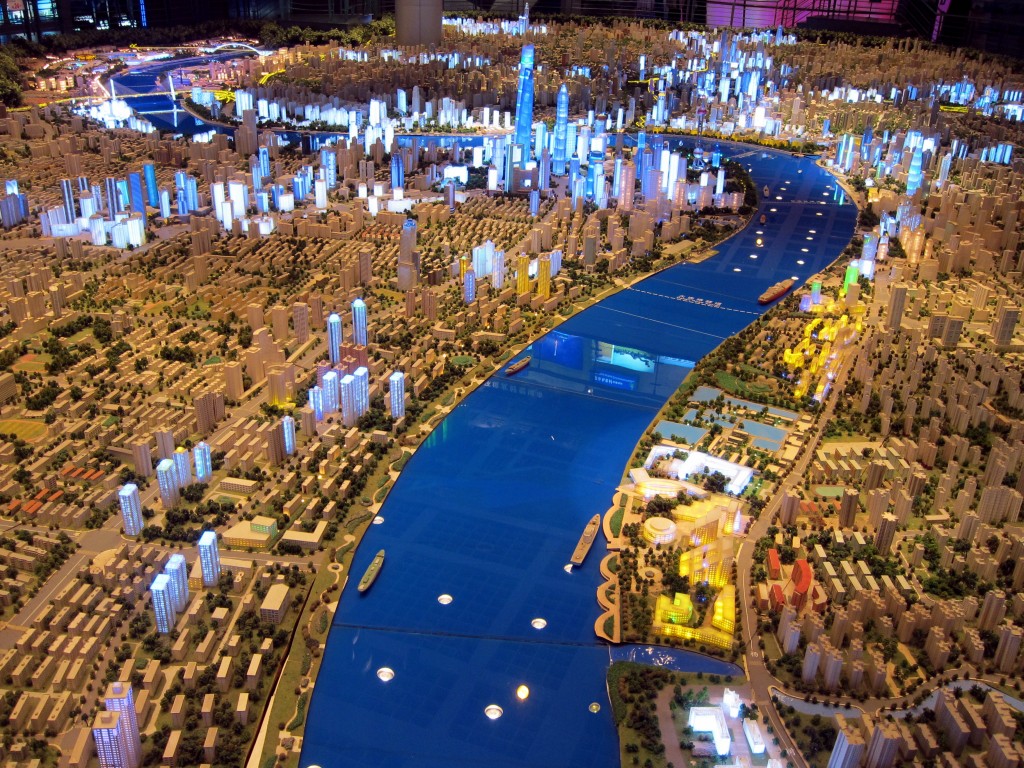
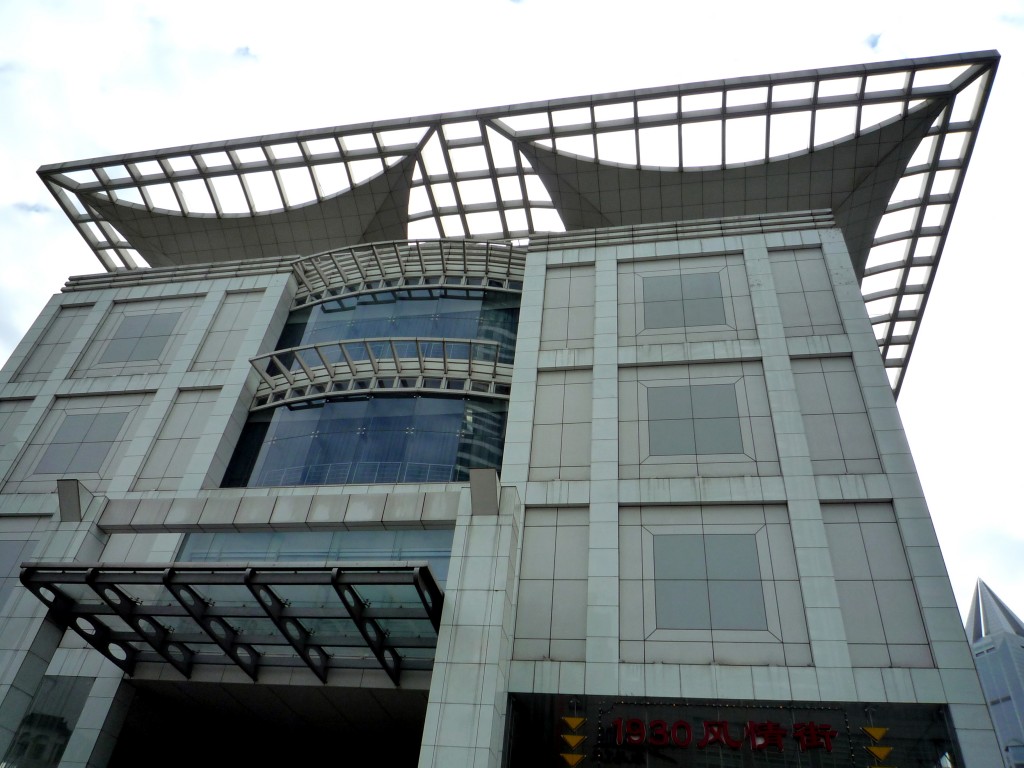
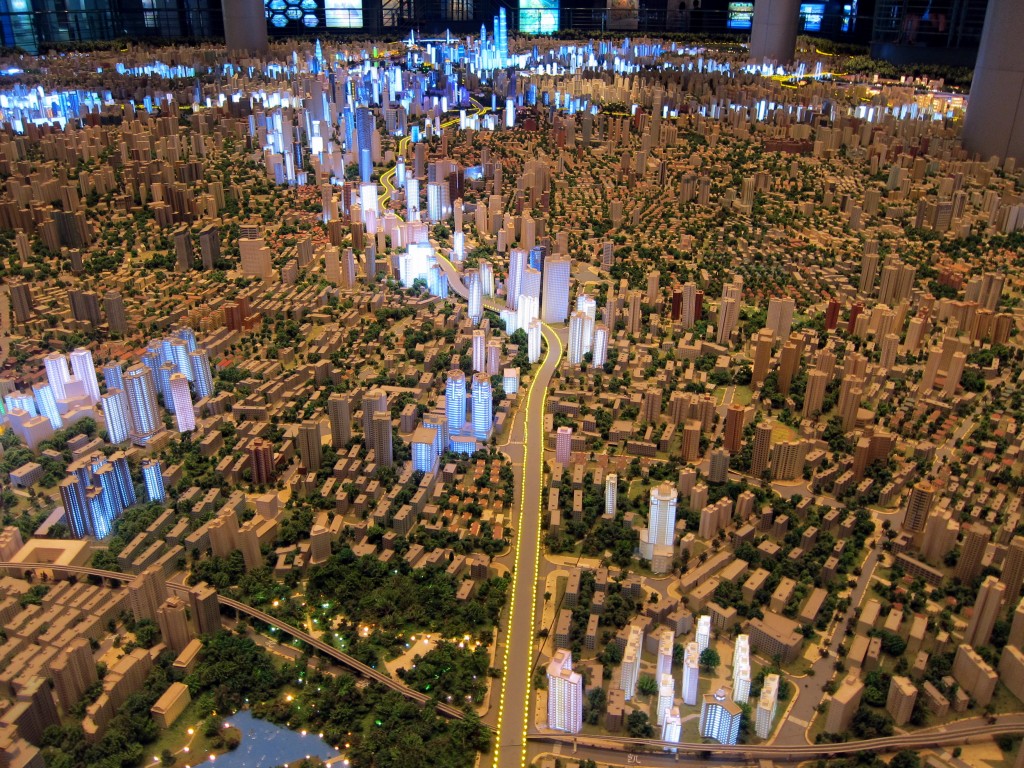
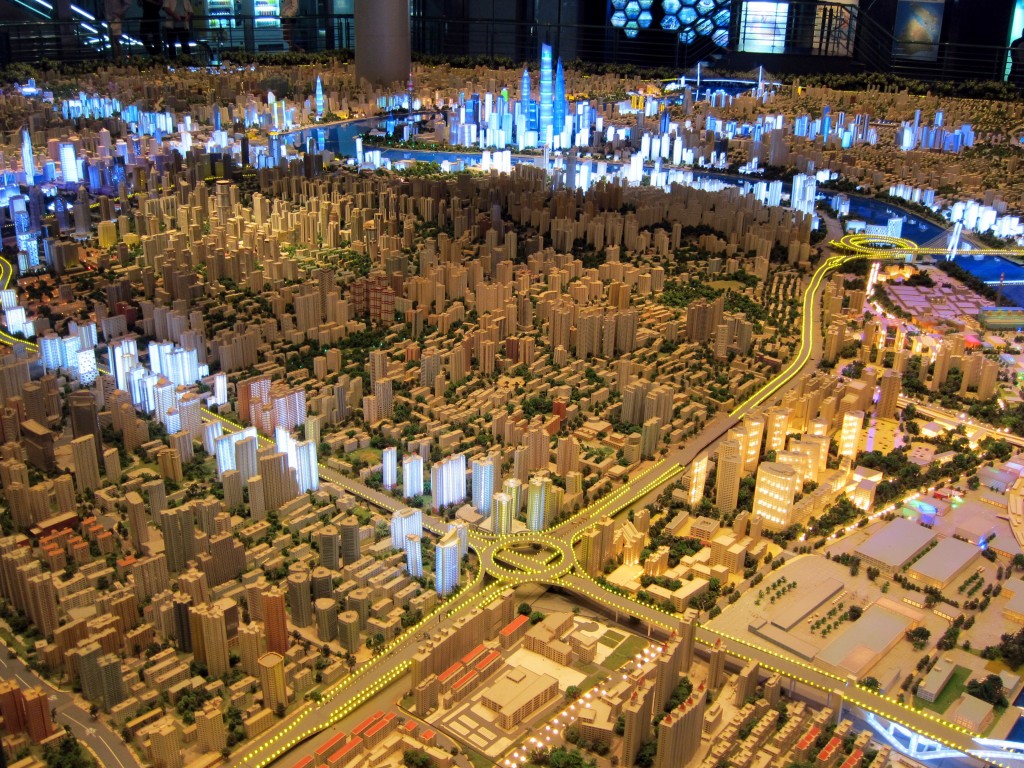
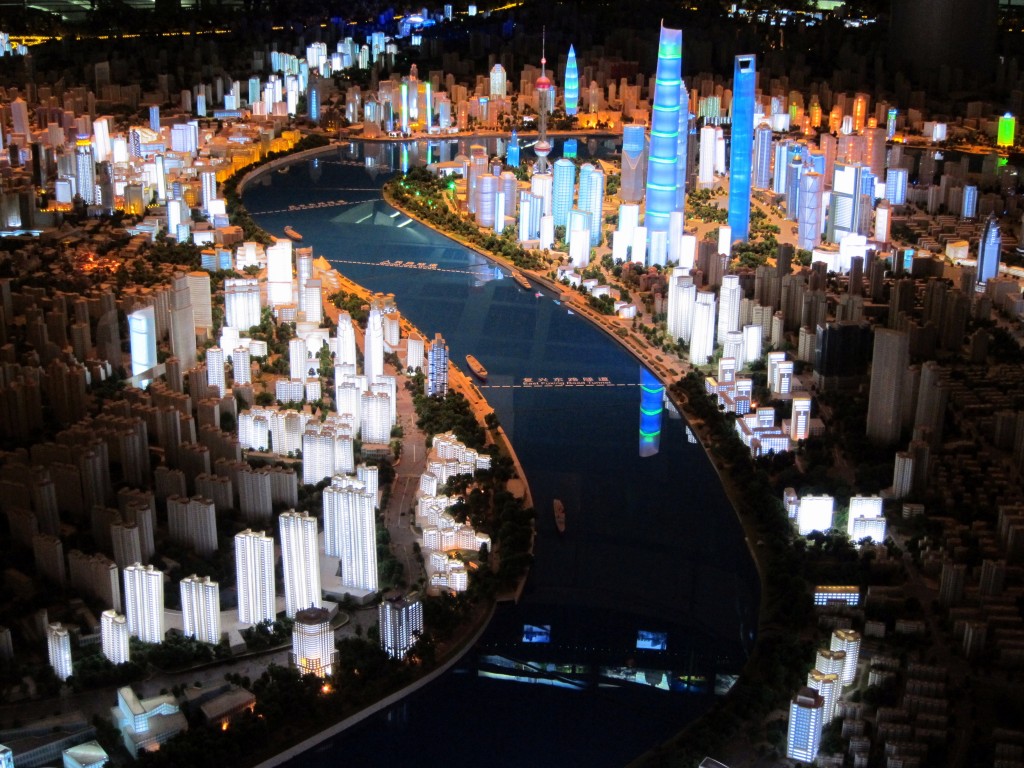
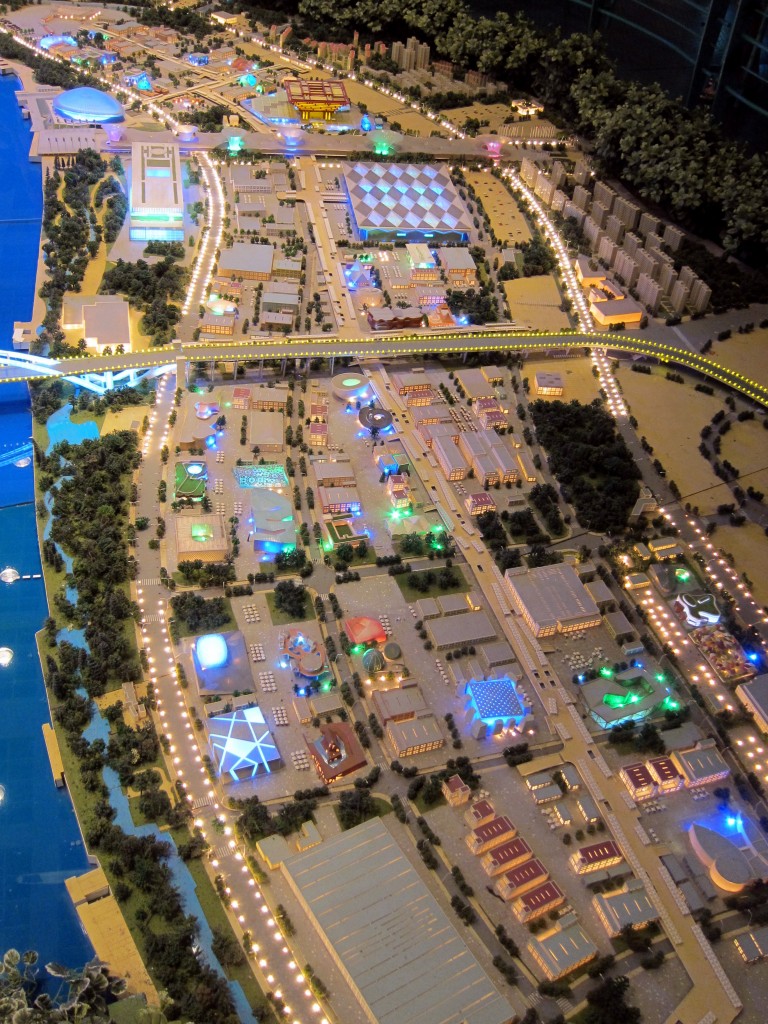
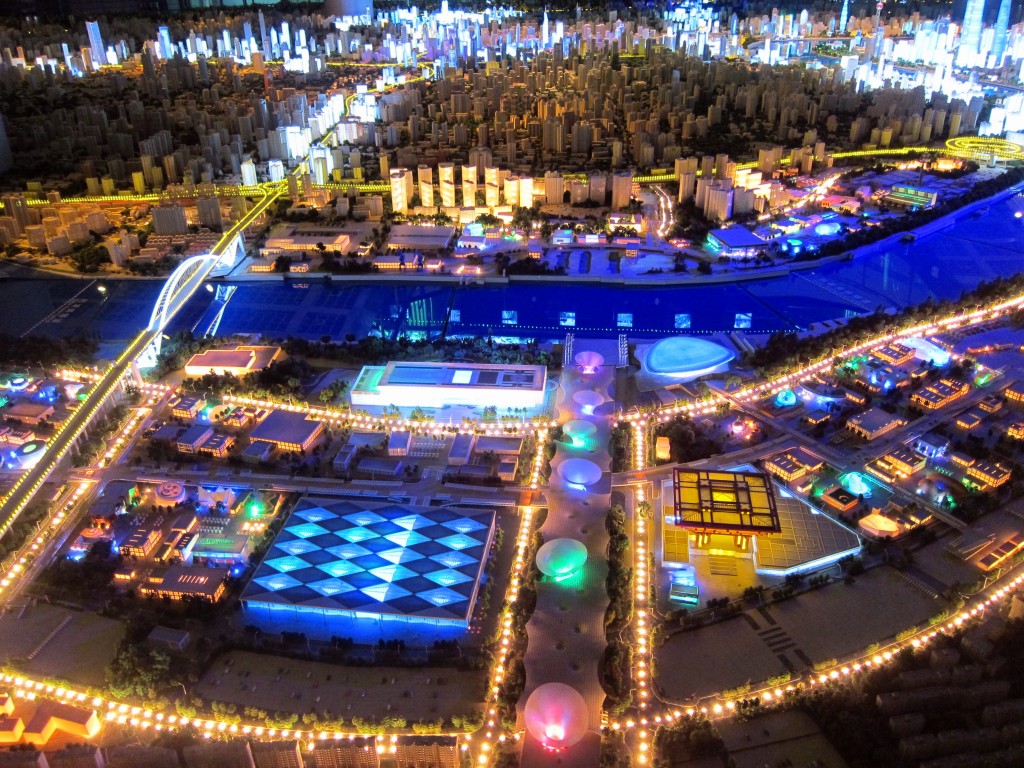
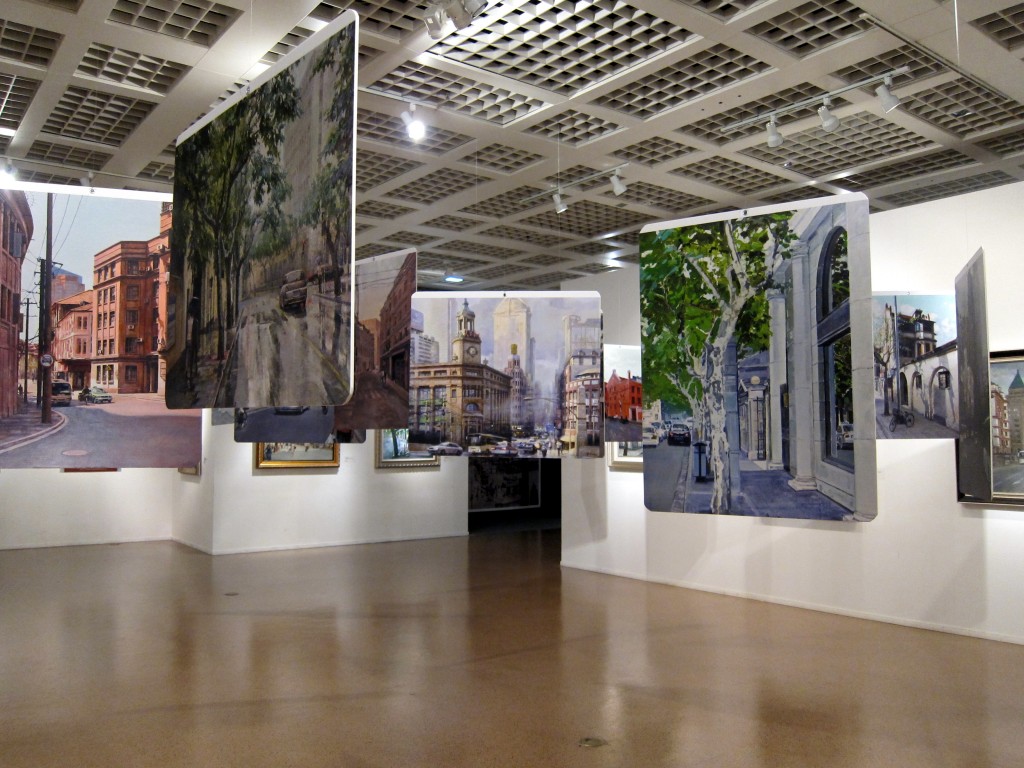
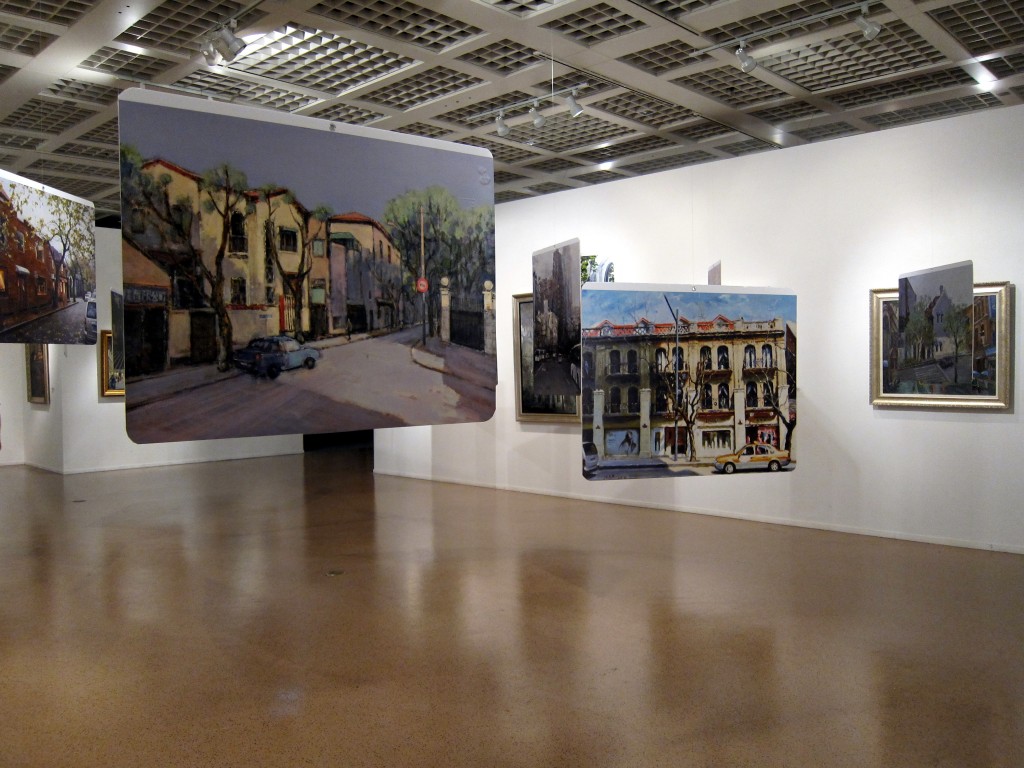
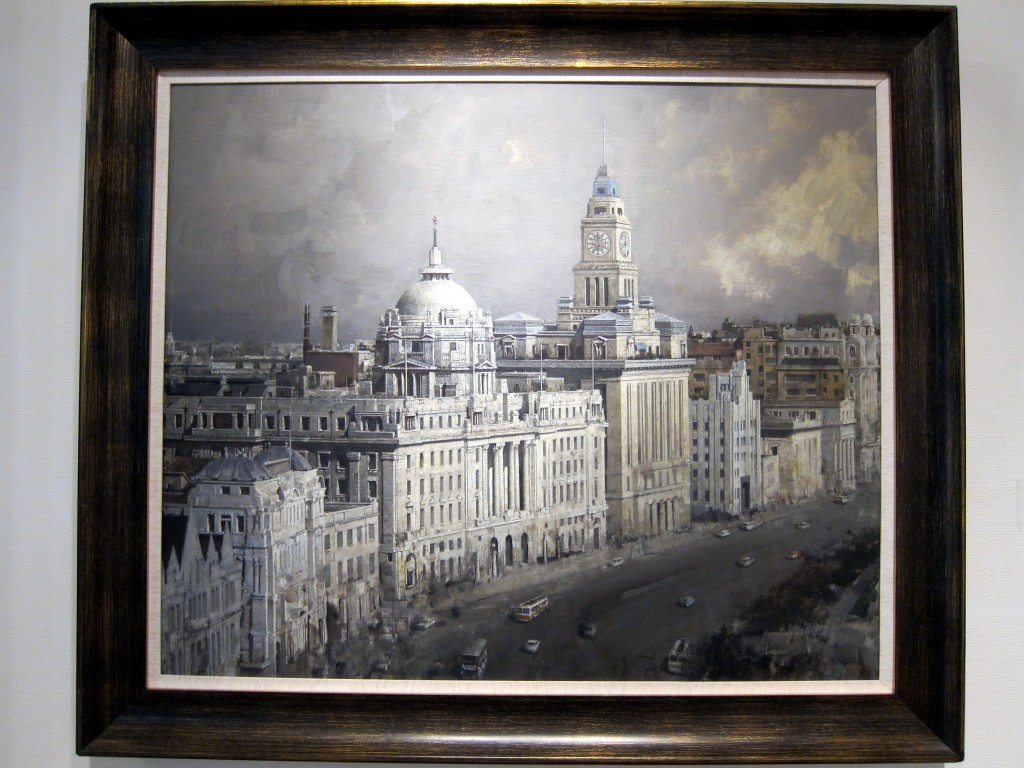
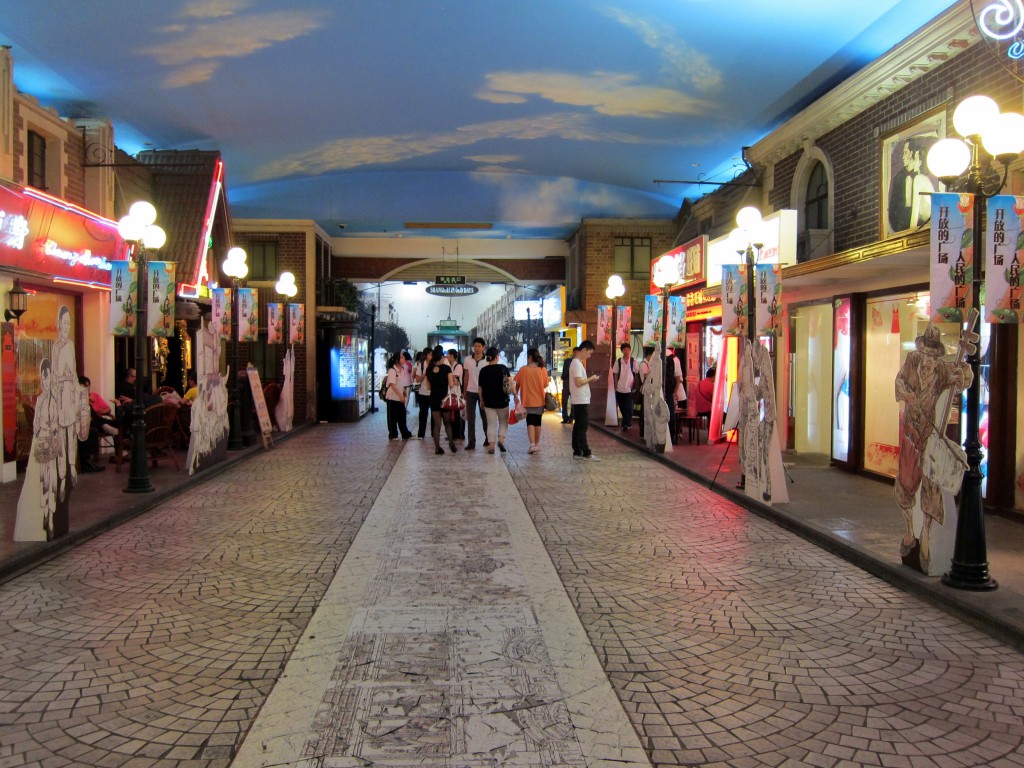
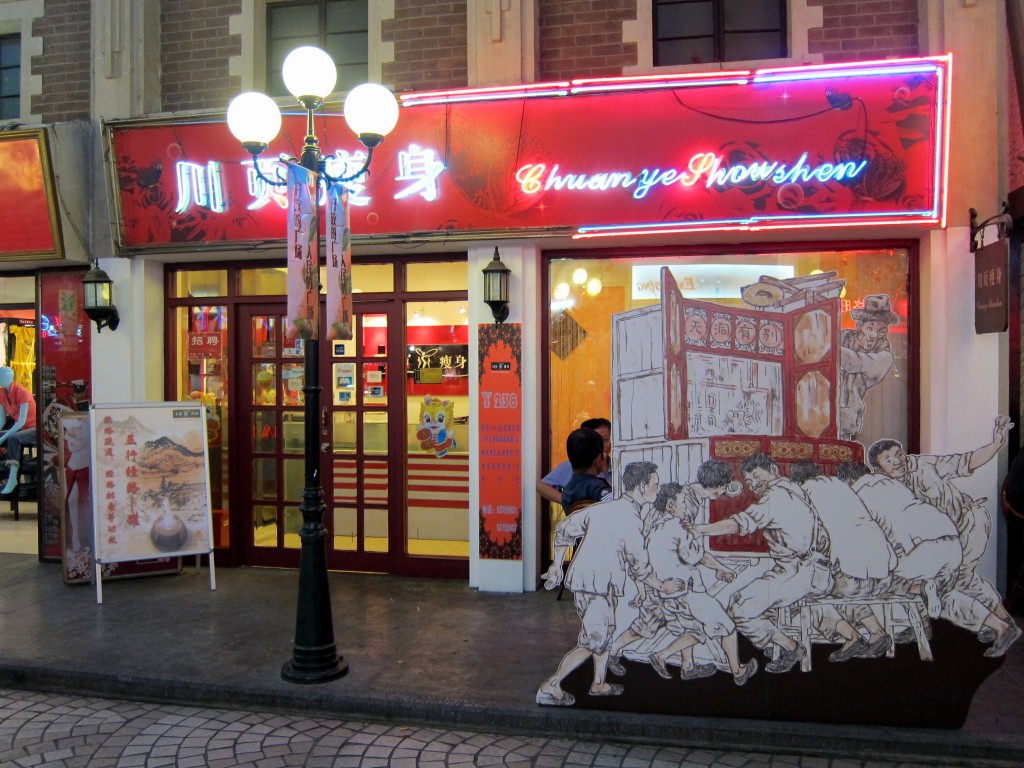
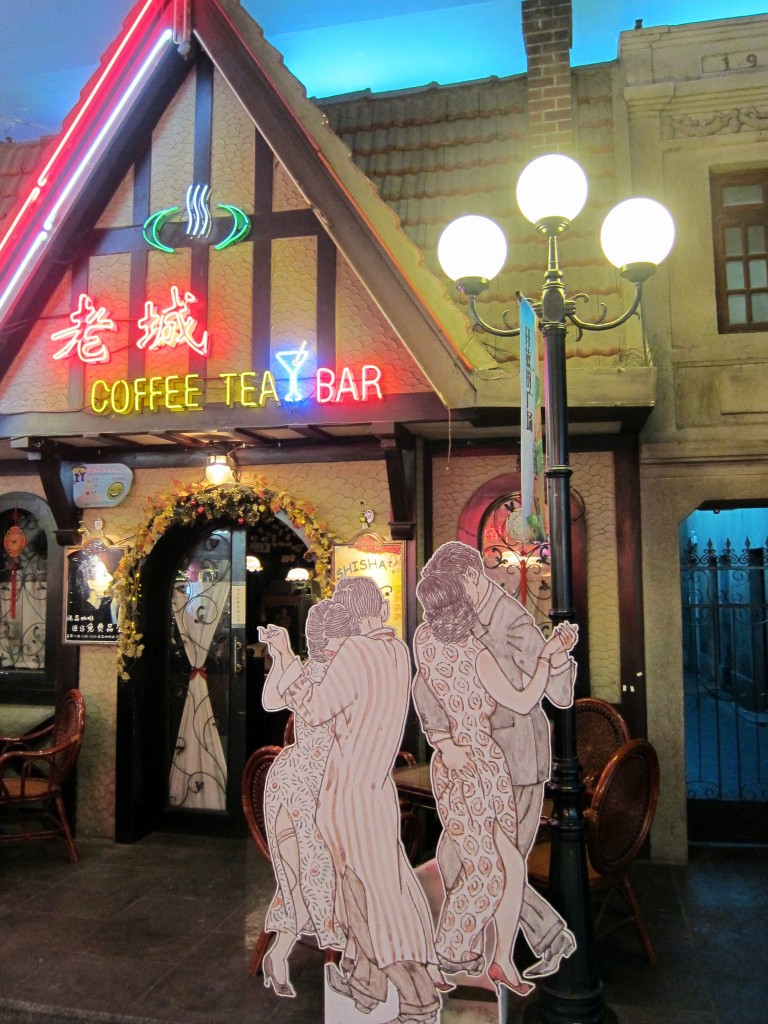
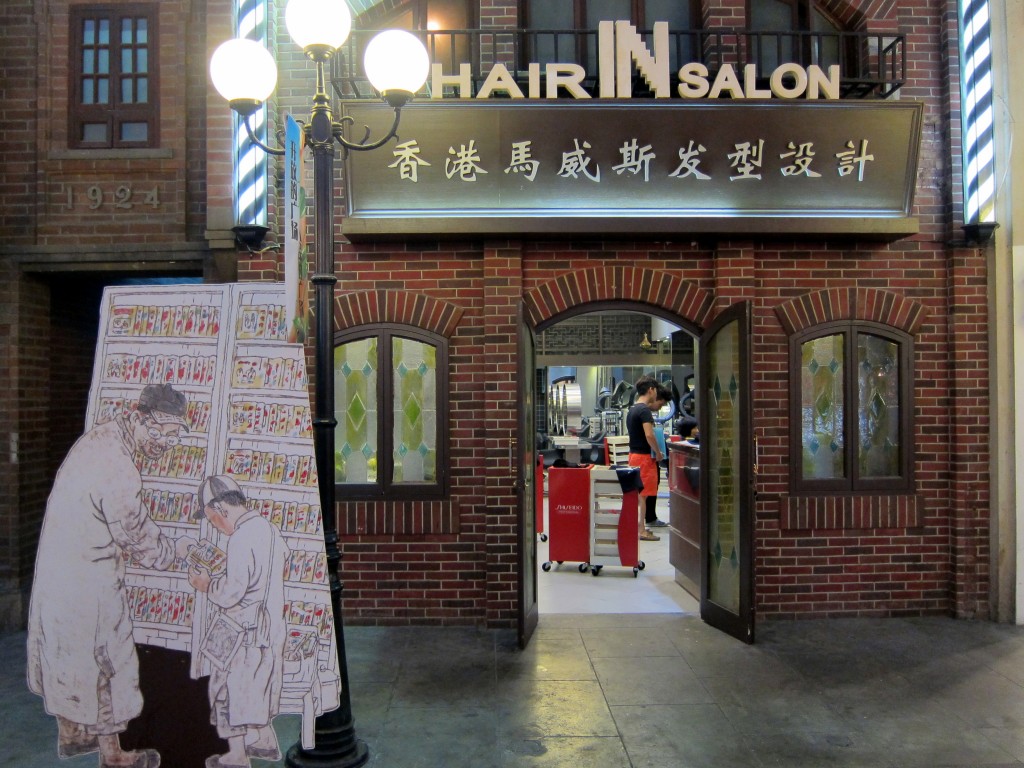
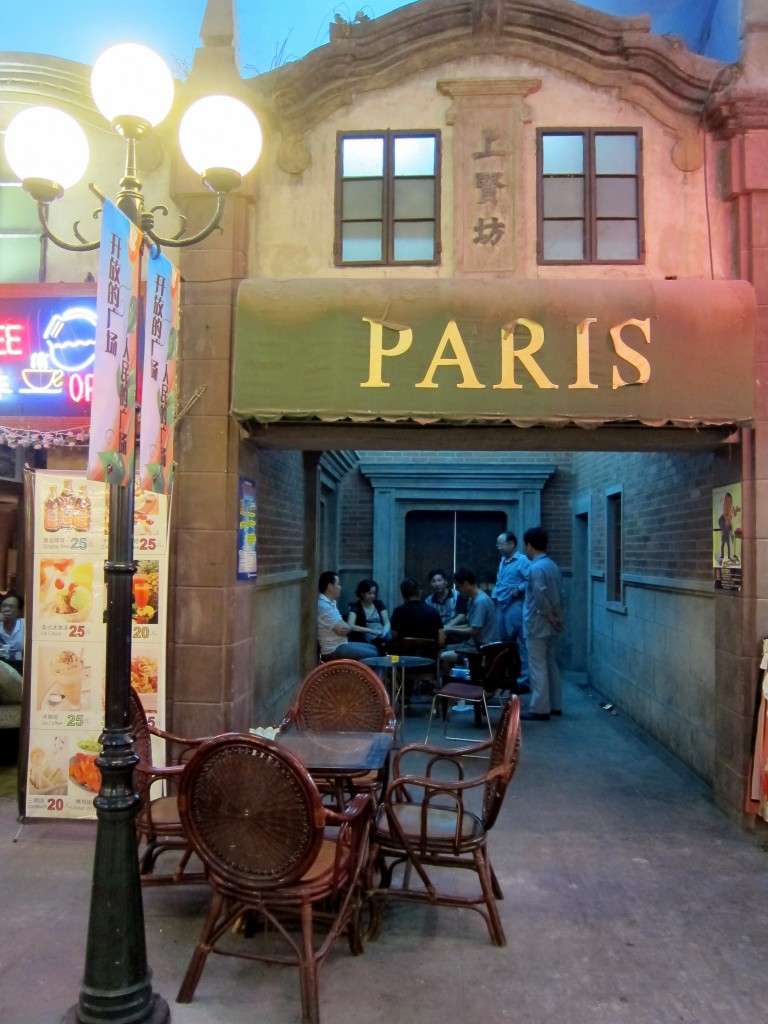
Wow that’s an awesome model! Looks like a crazy amount of development. The other photos look like something out of Las Vegas!
It’s really incredible. You can drive for an hour and still be in Shanghai. There’s no end in sight!
Wow – that’s a very impressive model. The skyline at night must be quite an impressive sight.
On a clear night, the skyline is gorgeous!